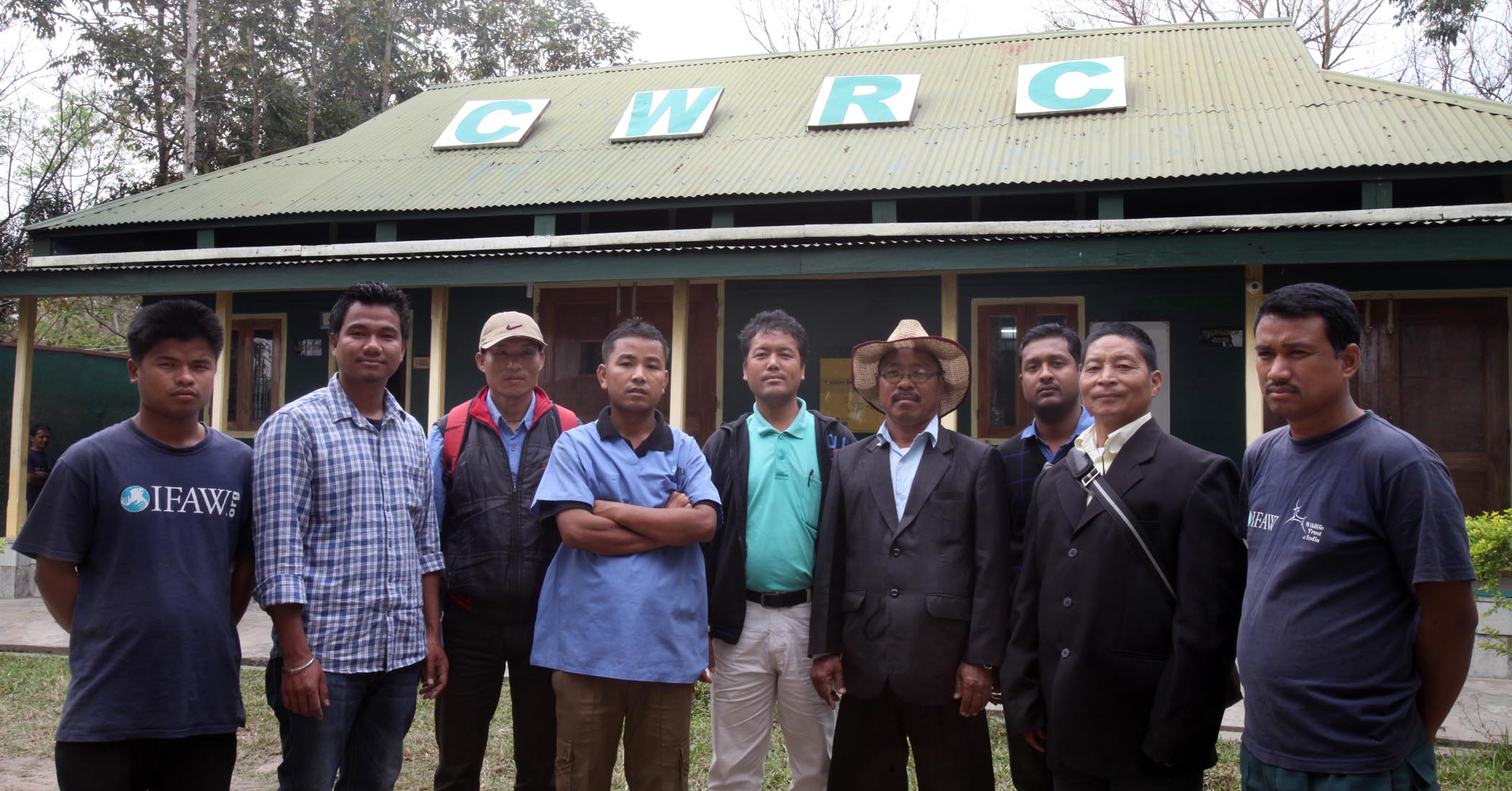
Visitors from Pakke with staff at CWRC, photo: WTI
The team consisted of the Chairman of the Ghora Abhe Society, a leading conservation NGO from Pakke, the village headman and two senior officials of the Eco development committee.
Jahan Ahmed who leads the project at CBRC explained that the purpose of this visit was to give them a feel of IFAW-WTI’s work on wildlife conservation and welfare.
Acknowledging the efforts of IFAW-WTI, Takam Nabam, Chairman Ghora Abhe Society said, “We are also trying hard to save the wildlife of Pakke. This visit exposed us to the vast work that IFAW-WTI is doing. When we return to Pakke, we will tell the people there about our learning from CWRC that can help conserve wildlife in Arunachal Pradesh too in a better way.”
The team also visited Kalapahar-Daigurung corridor of Kaziranga –Karbi Anglong landscape to see the village relocation program of WTI supported by Elephant Family which saw 19 families shift to a new location to give safe passage to elephants.
The Lanka elephant corridor in Pakke has five families residing on the corridor, in constant danger of conflict with elephants. This exposure will go a long way to encourage other communities adopt the idea of voluntary relocation.
In the past, exposure to the work done at CWRC has motivated local communities and NGOs from Wokha district in Nagaland to render yeoman service to saving Amur falcons in the region, a project that has won them several accolades and created conservation history. Read more about that here